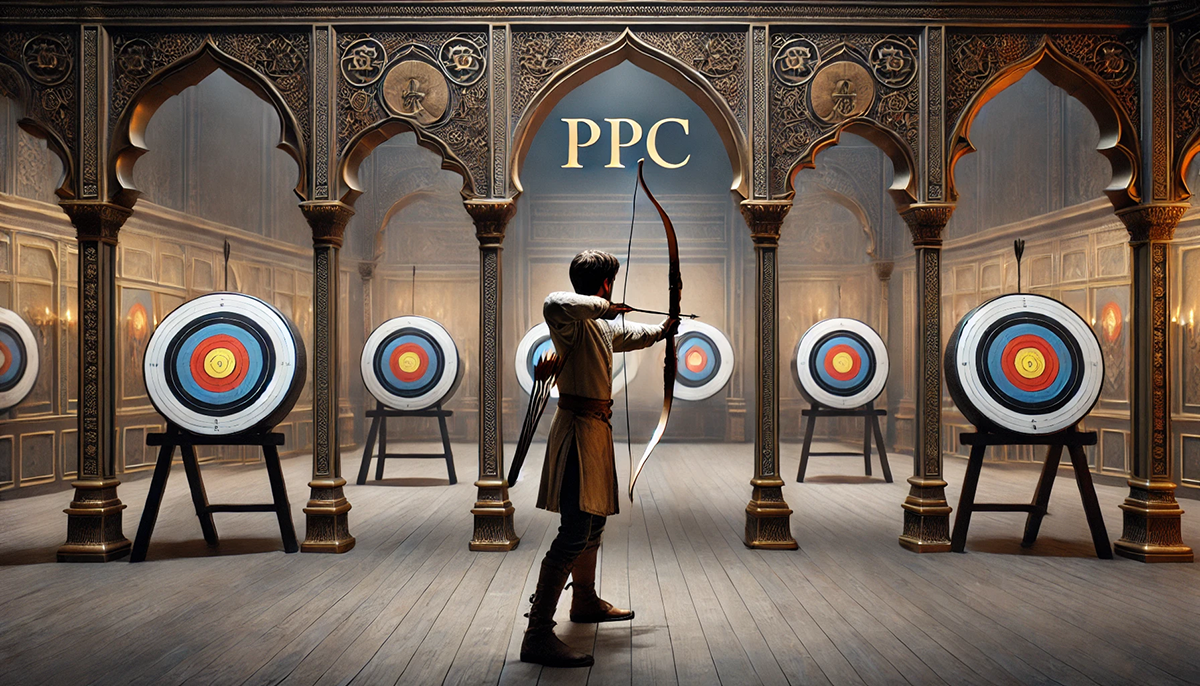content
Smart Bidding is the next stage in the development of a PPC specialist and Google Ads account after learning all the intricacies of manually managing your own advertising budget.
Smart Bidding will certainly lead to better results, but not immediately, even if everything is done correctly. This feature in AI-driven Google Ads campaigns is designed not only to simplify the life of advertisers, but also to give them more freedom when optimizing their campaigns. However, it is worth understanding that automation and AI are guaranteed to lead to higher budget costs, but today in the ADV Advantage blog, we will talk about the cost estimation metric and why you will want to spend more on Google advertising.
What is Smart Bidding?
Smart Bidding in Google Ads is an automated bidding strategy for PMAX campaigns that uses artificial intelligence to maximize advertising results. Roughly speaking, Google itself decides how much to bid on each click to get more conversions or maximize profits.

It takes into account a lot of factors: time of day, location, device type, user behavior, etc. The main strategies of Smart Bidding:
- Target price per conversion (CPA) – to get more applications for a specified budget.
- Target return on investment (ROAS) – to maximize revenue.
- Maximize conversions – simply drive the number of applications up.
- Maximizing the value of conversions is similar to ROAS, but without a clear goal.
The main advantage is time savings and more accurate bidding. The downside is that you need to collect enough data, otherwise the algorithm will be “stupid.”
Evaluating the effectiveness of Smart Bidding
To evaluate the effectiveness of Smart Bidding in Google Ads, you should pay attention to the following key metrics:
- Conversions – the number of targeted actions (purchases, applications, calls) received.
- Cost per conversion (CPA) – how much one targeted action costs. It is important for the Targeted CPA strategy.
- Return on advertising investment (ROAS) – how much money was earned compared to the cost of advertising. The main metric for Targeted ROAS.
- CTR (Click-Through Rate) is an indicator of ad click-through rate. If it is low, the advertisement may be irrelevant.
- Conversion rate is the ratio of clicks to conversions. It shows how well traffic is converted into actions.
- Share of impressions received (%) – what percentage of possible impressions were received (important if you need more visibility).
- Average cost per click (CPC) – helps to assess how effectively the algorithm manages bids.
Analyzing these metrics will help you understand whether Smart Bidding is working or if you need to tweak something.
The main condition for the successful use of AI campaigns is the availability of sufficient data in your Google account. This data usually includes conversions, clicks, audiences, and other statistics that help Google understand the advertised website.
Target ROAS is the most important performance measurement metric for a reason: it allows you to correlate costs to advertising revenue. The advertiser’s task is to specify the desired ROAS, and the algorithms will choose the users to whom the ads will be shown. Google has high hopes for them, as they were selected as those ready for conversions and are at the last step of the sales funnel.
ROAS = (Advertising costs / Advertising revenue) x 100%.
For example, you spent $1000 and earned $5000. ROAS = (5000 / 1000) × 100% = 500%.
Based on the actual ROAS data, you can optimize your advertising strategy, for example, increase your ad budget and get even more conversions with the same percentage of costs. Does it sound attractive?
Pitfalls of Smart Bidding
It’s these attractive promises that lead to the biggest disappointments. Let’s look at the most common mistakes made by others to avoid making your own costly mistakes.
Insufficient data
We have already emphasized that an account should contain enough statistics for AI algorithms to work correctly. More statistics means better results. You should start with a minimum of 30 conversions per month and an accurate way to track them.
If you don’t have enough data, try to get the maximum amount of traffic using click-through maximization strategies, perhaps better with manual CPC assignment.
For Smart Bidding, it’s important to allocate enough time for training. This is usually several weeks, during which it is forbidden to make major changes. The marketer’s task is to observe the results and analyze the data. One day, the algorithms will stabilize and the data will be consistent with reality.
Wrong goals
To guarantee the achievement of the goal, it is important to set the right goals in advance. Determine what exactly is your priority before launching an ad campaign, and only then choose a bid strategy. For example, if you want to improve ROAS, the Target CPA strategy may not be appropriate, as you will receive a large number of events that are unlikely to convert effectively into conversions.

Reassessment of Smart Bidding
Google’s AI algorithms are not perfect. They don’t respond well to sudden changes and take a long time to make changes to the assignment auction. Seasonal changes, new trends, and other fluctuations in the chosen trade area should be taken into account manually and adjusted accordingly. Google suggests making seasonal bidding adjustments in campaign settings to stay competitive during the selected time period.
Ignoring additional opportunities
It’s hard for beginners to grasp all the intricacies of Smart Bidding, but don’t ignore the opportunities to customize smart campaigns in detail. Bid simulation, A/B testing, audience splitting, and retargeting for specific ad groups can be the most effective tools that will set you apart from your competitors.
Best practices for Smart Bidding

Quality and only quality data
Collect only reliable data in your Google Ads account. To do this, it is important to choose the right target audience and set up conversion tracking in detail. Be sure to take into account macro conversion data, but only to analyze user behavior.
Choose the right metrics for performance analysis to accurately predict audience behavior and set ROAS values without blindly guessing.
Set realistic goals
Smart Bidding is not a magic pill, but a professional tool that does not forgive mistakes. Clearly define your own capabilities, budget, status, and brand position in the e-commerce sphere. Based on your own historical data, correctly determine the Target ROAS and Target CPA. Only when you get clear signals from your audiences can you start optimizing your campaigns by increasing your budget.
Focus on remarketing
Intelligent bidding requires fine-tuning audience segments based on demographics, devices used, and other behavioral metrics. The best practice is to focus on existing audiences, and for new audiences, you should set up a watch mode.
Experiments and A/B testing
Google Ads campaign settings allow you to conveniently configure options for testing creatives and campaign settings without losing its effectiveness. You simply run a slightly modified ad campaign in parallel, which spends only a selected percentage of your current budget and does not affect the results of active advertising. Monitor the results and make changes if you see positive changes.
Subscribe to our newsletter



